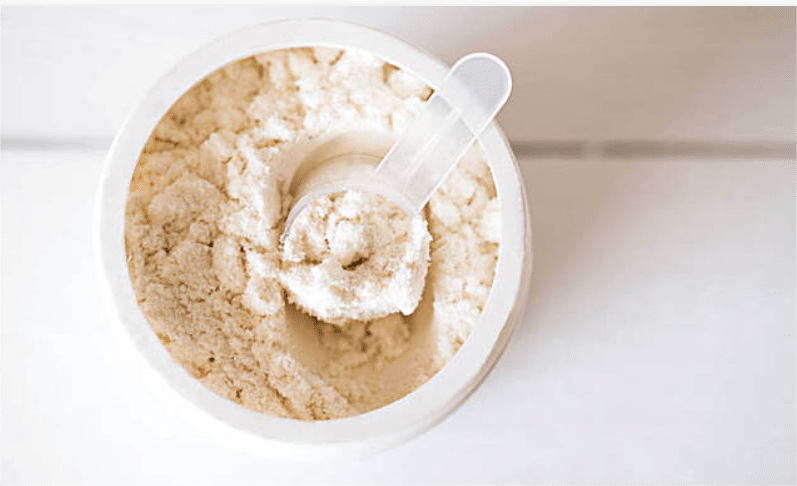In the dietary supplement market, glucosamine and soybean peptide are two popular options known for their potential health benefits, particularly for joint health. While glucosamine is well-established for its role in cartilage support, soybean peptide has garnered attention for its nutritional value and potential anti-inflammatory properties. This article explores the similarities and differences between glucosamine and soybean peptide, focusing on their benefits, mechanisms of action, side effects, and best practices for use.
Understanding Glucosamine
What is Glucosamine?
Glucosamine is a naturally occurring compound found in the body, especially in cartilage, which cushions the joints. It is commonly sourced from shellfish or synthesized for supplementation. There are several forms of glucosamine available:
- Glucosamine Sulfate: The most studied form, often associated with anti-inflammatory benefits.
- Glucosamine Hydrochloride: A stable form that lacks sulfate.
- N-acetyl Glucosamine: A derivative that may offer additional health benefits.
How Does Glucosamine Work?
Glucosamine is crucial for the formation and repair of cartilage. It stimulates the production of glycosaminoglycans (GAGs) and proteoglycans, essential components of cartilage that help maintain its structure and function. By supporting cartilage health, glucosamine may help alleviate pain and inflammation linked to conditions like osteoarthritis.
Exploring Soybean Peptide
What is Soybean Peptide?
Soybean peptide is derived from soybeans, a plant rich in proteins and essential amino acids. The extraction process breaks down soybean proteins into smaller peptides, which are believed to enhance bioavailability and therapeutic effects. Soybeans are also a source of isoflavones, known for their antioxidant properties.
How Does Soybean Peptide Work?
Soybean peptide contains bioactive compounds that may help modulate inflammation, support muscle recovery, and promote overall health. These peptides can enhance the body’s natural healing processes and may also contribute to collagen production, essential for maintaining healthy cartilage and connective tissues.
Key Differences Between Glucosamine and Soybean Peptide
- Source and Composition:
– Glucosamine: Typically derived from shellfish or synthesized. It is a specific compound that plays a direct role in cartilage health.
– Soybean Peptide: Extracted from soybeans, it is a complex mixture of bioactive peptides and proteins, providing various health benefits.
- Mechanism of Action:
– Glucosamine: Supports cartilage health by promoting the synthesis of GAGs and proteoglycans.
– Soybean Peptide: Provides bioactive compounds that may help reduce inflammation and support collagen synthesis.
- Administration:
– Glucosamine: Commonly taken in oral form (capsules, tablets, or powders).
– Soybean Peptide: Available in various forms, including powders and supplements, often used to enhance protein intake and overall wellness.
- Uses:
– Glucosamine: Primarily used for joint health and pain relief.
– Soybean Peptide: Used for muscle recovery, joint health, and nutritional support.
- Efficacy:
– Glucosamine: Research shows mixed results regarding its effectiveness in reducing pain and improving joint function.
– Soybean Peptide: Emerging studies suggest potential benefits for muscle recovery and inflammation reduction, but further research is needed.
Benefits of Glucosamine
– Cartilage Support: Glucosamine may help slow cartilage degeneration, benefiting individuals with osteoarthritis.
– Pain Relief: Some studies indicate that glucosamine can reduce joint pain, particularly in the knees.
– Anti-inflammatory Effects: It may decrease inflammation associated with joint degeneration.
Benefits of Soybean Peptide
– Muscle Recovery: Soybean peptide can aid in muscle repair and growth, making it beneficial for athletes and active individuals.
– Anti-inflammatory Properties: It may help reduce inflammation, supporting joint health and overall wellness.
– Nutritional Support: Rich in essential amino acids, soybean peptide can enhance dietary protein intake.
Potential Side Effects
Both glucosamine and soybean peptide are generally considered safe, but they may have side effects.
– Glucosamine: Potential side effects include gastrointestinal issues such as nausea, diarrhea, and constipation. Allergic reactions may occur, especially in individuals allergic to shellfish.
– Soybean Peptide: Side effects are rare but may include digestive discomfort or allergic reactions in individuals with soy allergies.
Choosing Between Glucosamine and Soybean Peptide
When deciding between glucosamine and soybean peptide, consider the following factors:
- Health Goals: If you are primarily focused on joint health and pain relief, glucosamine may be more appropriate. If your goal is to support muscle recovery and overall wellness, soybean peptide could be more effective.
- Dietary Preferences: Soybean peptide is a plant-based option, making it suitable for vegetarians and vegans, while glucosamine is often derived from shellfish.
- Consultation with a Healthcare Provider: Always consult with a healthcare professional before starting any new supplement, especially if you have existing health conditions or are taking other medications.
The Role of Lifestyle in Joint and Muscle Health
While glucosamine and soybean peptide can contribute to joint and muscle health, maintaining a healthy lifestyle is crucial. Regular exercise, a balanced diet rich in anti-inflammatory foods, and staying hydrated can significantly impact your overall well-being. Combining supplements with a healthy lifestyle may yield better results in managing joint and muscle health.
Combining Glucosamine and Soybean Peptide
For individuals looking to address both joint health and muscle recovery, combining glucosamine and soybean peptide might be beneficial. While they serve different purposes, their complementary effects on joint support and muscle repair could work together effectively. However, it’s essential to monitor your body’s response and consult a healthcare provider before starting a combined regimen.
Conclusion
In summary, glucosamine and soybean peptide are two popular supplements that offer distinct health benefits. Glucosamine is primarily used for joint health and pain relief, supporting cartilage repair and reducing inflammation. In contrast, soybean peptide provides a rich source of protein and bioactive compounds that may promote muscle recovery and overall wellness. Understanding these differences can help you make informed choices about your health and wellness.
Whether you choose glucosamine, soybean peptide, or both, it’s vital to maintain a comprehensive approach to health that includes proper nutrition, regular exercise, and consultation with healthcare professionals. By doing so, you can maximize the benefits of these supplements and support your overall well-being.



